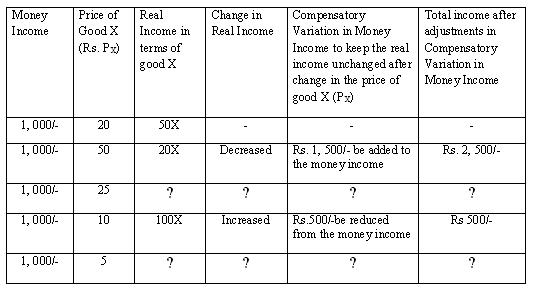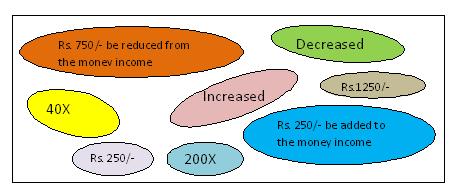SUBSTITUTION EFFECT
MICROECONOMICS

|
SUBSTITUTION EFFECT |

|
Introduction |
Similar to price and income, change in relative prices is yet another factor that influences buyer's quantity purchased. Changes in relative prices lead the consumer to change her/his consumption, in order to maximize the utility of spendable income. Consumer's preference for relatively cheaper goods is called the 'sunstitution effect'. The analysis of relative price changes on consumer's responses is an important part of the theory of consumer's behavior.
In term of indifference curves analysis, the substitution effect measures consumer's movement from one optimal consumption combination to another, on her/his indifference map, as a result of change in relative prices. The substitution effect, discussed in this section, explains the logic and process of decision making by the consumer to arrive at optimal decision, as a response to change in relative prices.
In this section we discuss Hicksian and Slutsky's substitution effect. There is a small variation in their approaches. It is important to understand the differences in the approach and their applications in microeconomic analysis.
| Substitution Effect: Related Concepts |
The substituion effect measures how the optimal consumption combination of a consumer changes as a result of change in the relative price alone, real income of the consumer remaining unchanged.
We need to understand here the meaning of relative price change and real income remaining unchanged.
In relative price change, comparison is between prices of two goods. For example, between goods X and Y, good X becoms relatively cheaper (costlier) when price of good X (Px)decreases (increases)with price of good Y remaining unchanged.
The real income on the other hand shows purchasing power of the money income. For the given money income, whenever price of a good changes then the purchasing power of consumer's money income increases and so also her/his real income. For example suppose a consumer is spending her/his money income on good X. When the price of the good X decreases, the consumer's purchasing power increases and with same money income she/he is able to purchase more of good X.
Now, a substitution effect shows change in the consumer’s optimal consumption combination on account of change in the relative price alone and thereby changes in her/his quantity purchased of goods X and Y, real income of the consumer remaining unchanged.
Note that consumer's real income changes whenever there is a relative price change. Then, how do we study substitution effect which shows changes in consumer's purchases on account of relative price changes, consumer's real income remaining unchanged?
A compensatory variation in money income method is used to neutralize the real income change that takes place on account of the relative price change. The consumer's money income is sufficiently adjusted to compensate her/him for real income changes on account of change in the price of a good.
Solve the following activity to gain adequate clarity on the concepts just discussed, before we move on to understanding substitution effect with the help of indifference curves.






